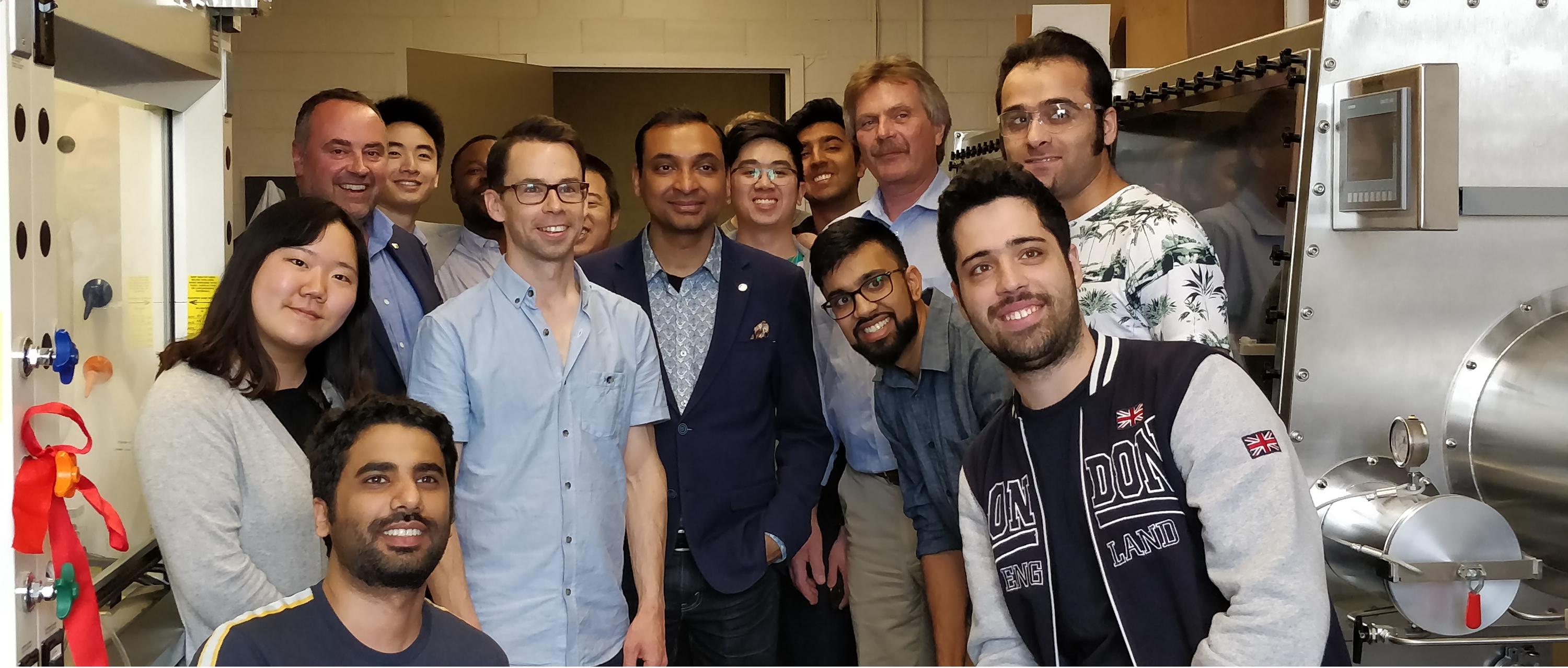 By Lily Roth, co-op student
By Lily Roth, co-op student
With the help of seven University of Waterloo co-op students, Canada’s first Spatial Atomic Layer Deposition (SALD) system is up and running. At the celebratory ribbon cutting on May 10, 2018, project leader Professor Kevin Musselman said he couldn’t have done it without the co-op students who helped design and build the machine.
“I was sitting at my desk the whole time. I don't think I ever lifted a finger so it was entirely built by the students,” laughs Musselman.
Atomic Layer Deposition (ALD) systems is a nanoscience technique that allows you to coat a surface with a substance just a few atomic layers at a time. The technique is frequently used in the micro-electronics industry. Unlike traditional ALD systems, the Spatial ALD does not require a vacuum and therefore is cheaper to build, operates faster and can coat larger scale items. Now that the first SALD system is working, Musselman plans to continue hiring co-op students to work on a commercial scale version of the system.
The ribbon was officially cut by the Director of the Waterloo Institute for Nanotechnology Sushanta Mitra, Mechanical and Mechatronics Engineering Chair Jan Huissoon and Executive Director of Co-operative Education Ross Johnston.
After the ribbon cutting, the students spent some time reminiscing about their involvement with the project. Stella Kim, 3A Environmental Engineering, was the first co-op student to work on the system. “It was a really good opportunity to learn about the software. I didn't have a research background so I wanted to learn more about the research,” says Kim. “It was four months, it was short, but it was a great time.”
Graduate students also commended the co-op students for helping with the project. “It's really impressive what the co-ops have done because this is something that you would pay a consultant, a technical person, a company or a design firm to do,” says graduate student Kissan Mistry, PhD Nanotechnology Engineering, who also worked on the project.





